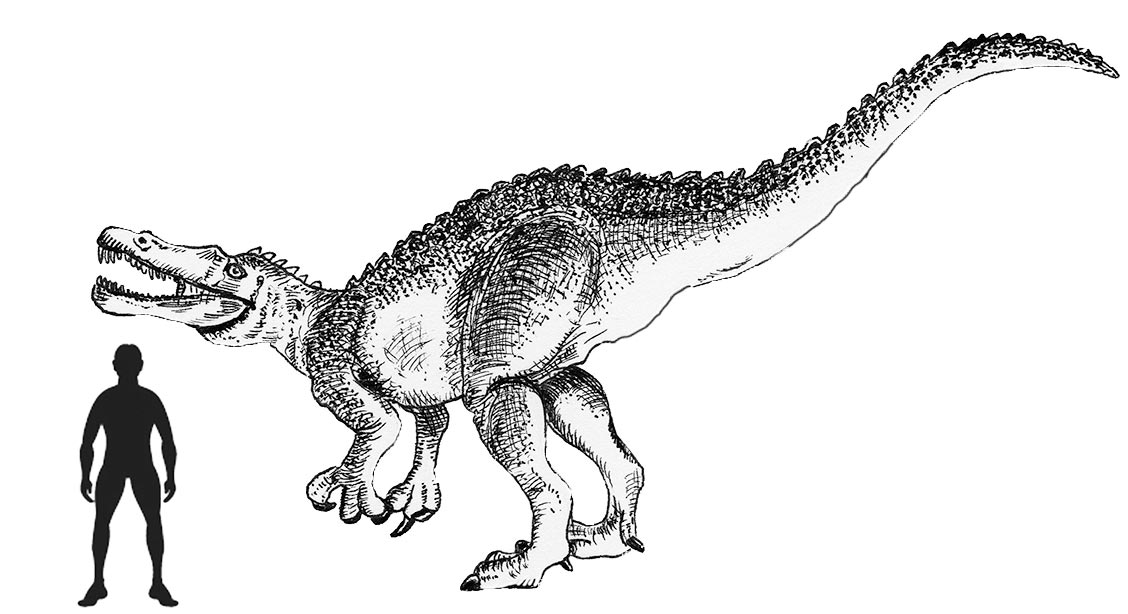A Scale Drawing of the Spinosaurid Suchomimus
Suchomimus Scale Drawing
Suchomimus (S. tenerensis) fossils were first found in 1973, but at the time, little was known about spinosaurids. Recent reviews of the fossil material have placed this dinosaur from the Early Cretaceous of Niger within the Spinosauridae, specifically assigned to the Baryonychidae. Some studies (2002), concluded that the fossil material represented a second species of Baryonyx and proposed the name Baryonyx tenerensis. Subsequent research established a number of autapomorphies (distinctive features), between the fossils assigned to Baryonyx and Suchomimus, enabling the two genera to be retained. Suchomimus was probably very closely related to Baryonyx walkeri.
For models and replicas of spinosaurid dinosaurs including Baryonyx and Suchomimus: Safari Ltd Dinosaurs and Prehistoric Animals.
A Scale Drawing of Suchomimus (S. tenerensis)
Picture credit: Everything Dinosaur
Suchomimus
The hosting rock has been dated to the Late Aptian faunal stage, suggesting that Suchomimus lived many millions of years after Baryonyx. Like Baryonyx, the first fossil material found was an enlarged thumb claw. The holotype fossil material of Suchomimus is much bigger than the holotype fossil material of Baryonyx (B. walkeri). However, as the ages of the individual dinosaurs are not known, direct size comparisons are not relevant. Based on the Suchomimus material (and that previously assigned to Cristatusaurus lapparenti), Suchomimus could have exceeded eleven metres in length and weighed as much as four tonnes.
Suchomimus translates as “crocodile mimic”, a reference to the long, crocodile-like snout, lined with conical teeth adapted for grasping slippery prey such as fish.
Visit the Everything Dinosaur website: Everything Dinosaur.


